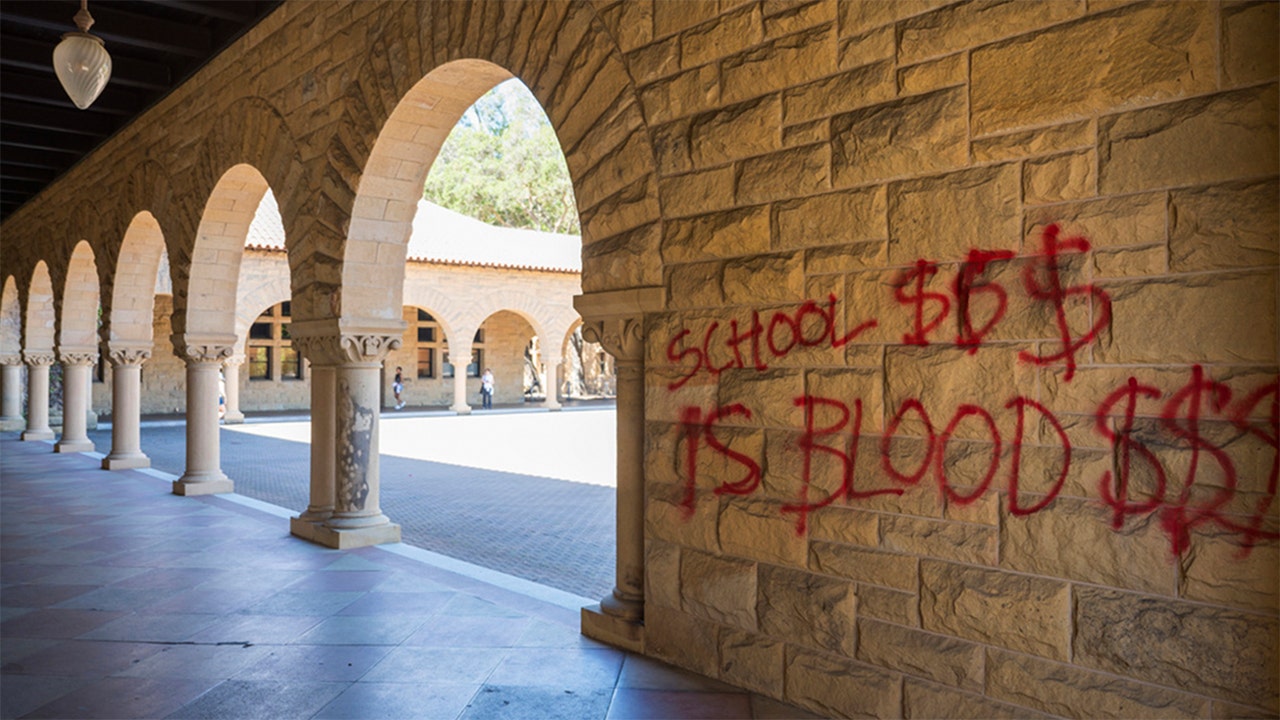Masked anti-Israel Stanford protesters charged in destructive campus building takeover

The Santa Clara County District Attorney’s Office recently made headlines as they charged a dozen individuals for breaking into a Stanford University campus building, barricading themselves inside, and vandalizing administrative offices during an anti-Israel protest that took place last June. The masked individuals, whose ages ranged from 19 to 32, were accused of causing extensive damage by breaking windows, furniture, splashing fake blood, and disabling security cameras. The district attorney’s office reported that the damage amounted to hundreds of thousands of dollars.
The suspects are facing charges of felony vandalism and felony conspiracy to trespass, and will be arraigned later this month at the Hall of Justice in San Jose. If convicted, they could face incarceration and be required to pay restitution for the damages caused. The incident took place at Building 10 on Stanford’s campus, which houses the university president’s office. The protest started at around 5:30 a.m. with individuals spray-painting the building and shattering a window.
According to the district attorney’s office, the protesters then proceeded to barricade themselves inside the building using ladders, furniture, and other equipment they had brought with them. They also recorded social media videos listing a series of demands while causing further destruction inside the building. Law enforcement officers from the Stanford University Department of Public Safety, Santa Clara County Sheriff’s Office, and Palo Alto Police Department responded to the scene and were able to arrest 13 individuals, including some current and former Stanford students.
The vandalism included damage to offices, door frames, furniture, and items defaced with fake blood splatter. Graffiti with inflammatory messages such as “Kill cops,” “Burn this s— down,” and “Death to Israel” were found on the walls. The protesters’ backpacks contained tools for forcible entry, including an electric grinder, hammers, crowbars, chisels, screwdrivers, goggles, straps, and cables. Cellphones recovered from the arrested individuals showed encrypted text messages and links to detailed operational plans, indicating premeditation and coordination.
District Attorney Jeff Rosen emphasized the distinction between peaceful protest and criminal behavior, stating that while dissent is a fundamental right, vandalism is a criminal act. He highlighted the calculated nature of the destruction carried out by the defendants. The communication shared among the protesters included a “DO-IT-YOURSELF OCCUPATION GUIDE” that justified vandalism as a means of removing a space from the capitalist landscape.
A student journalist who had embedded with the protesters but did not participate in the vandalism was not charged in connection with the incident. The investigation and legal proceedings continue as the defendants prepare to face the consequences of their actions. The incident serves as a reminder of the fine line between exercising free speech and engaging in criminal behavior, urging individuals to express their views in a lawful and respectful manner.




